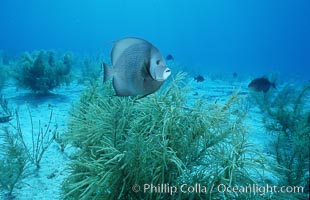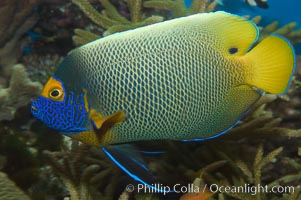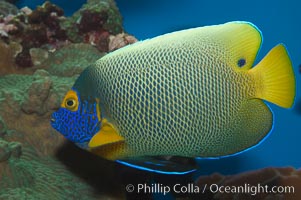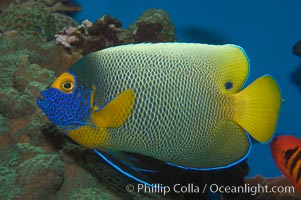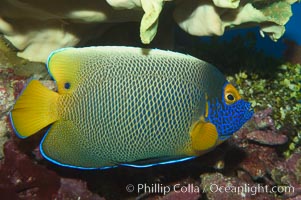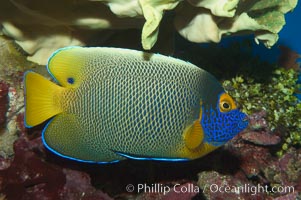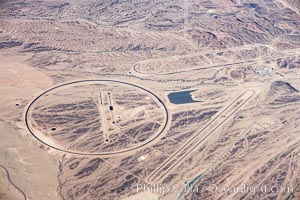
A top secret, high security alien spaceship depot in the desert east of the Colorado River. Long suspected but only confirmed to exist for the first time with this photograph, this is a derivative high tech interstellar flight complex arising from work originally conducted at the (nonexistant) Area 51. Strangely, certain curious aspects of this location, such as the circle and long oval tracks which support landings and liftoff of gravity drive Martian and Saturnian craft, are not shown on Google Earth, while other features in this photograph area such as the long ovoid skateboard track are indeed seen on Google Earth and can be matched to this image. The US Government will likely deny the mere existence of this bizarre Martian landing area.
Location: Alien Spaceship Landing Field, California
Image ID: 22130
Location: Alien Spaceship Landing Field, California
Image ID: 22130
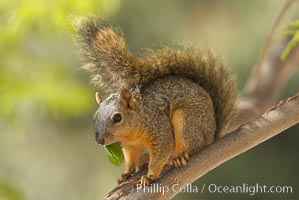
Eastern fox squirrel. The eastern fox squirrel historically occur in the eastern and central portions of North America, but have been introduced in the 1900's to urban areas in the western United States. They are the largest of the North American squirrels, reaching 29 inches in length and up to 3 pounds. They are generalist feeders with a diet that varies according to their habitat, including nuts, seed, bird eggs and chicks, frogs, flowers and agricultural crops.
Species: Eastern fox squirrel, Sciurus niger
Location: Los Angeles, California
Image ID: 18964
Species: Eastern fox squirrel, Sciurus niger
Location: Los Angeles, California
Image ID: 18964
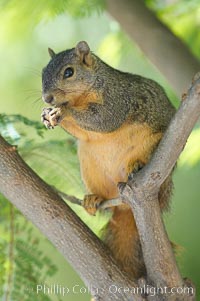
Eastern fox squirrel. The eastern fox squirrel historically occur in the eastern and central portions of North America, but have been introduced in the 1900's to urban areas in the western United States. They are the largest of the North American squirrels, reaching 29 inches in length and up to 3 pounds. They are generalist feeders with a diet that varies according to their habitat, including nuts, seed, bird eggs and chicks, frogs, flowers and agricultural crops.
Species: Eastern fox squirrel, Sciurus niger
Location: Los Angeles, California
Image ID: 18965
Species: Eastern fox squirrel, Sciurus niger
Location: Los Angeles, California
Image ID: 18965
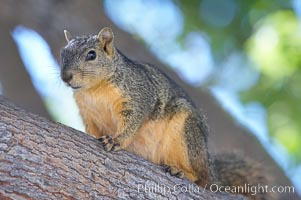
Eastern fox squirrel. The eastern fox squirrel historically occur in the eastern and central portions of North America, but have been introduced in the 1900's to urban areas in the western United States. They are the largest of the North American squirrels, reaching 29 inches in length and up to 3 pounds. They are generalist feeders with a diet that varies according to their habitat, including nuts, seed, bird eggs and chicks, frogs, flowers and agricultural crops.
Species: Eastern fox squirrel, Sciurus niger
Location: Los Angeles, California
Image ID: 18966
Species: Eastern fox squirrel, Sciurus niger
Location: Los Angeles, California
Image ID: 18966
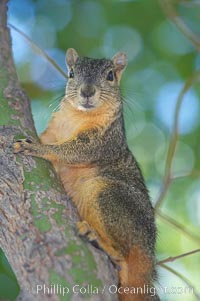
Eastern fox squirrel. The eastern fox squirrel historically occur in the eastern and central portions of North America, but have been introduced in the 1900's to urban areas in the western United States. They are the largest of the North American squirrels, reaching 29 inches in length and up to 3 pounds. They are generalist feeders with a diet that varies according to their habitat, including nuts, seed, bird eggs and chicks, frogs, flowers and agricultural crops.
Species: Eastern fox squirrel, Sciurus niger
Location: Los Angeles, California
Image ID: 18967
Species: Eastern fox squirrel, Sciurus niger
Location: Los Angeles, California
Image ID: 18967
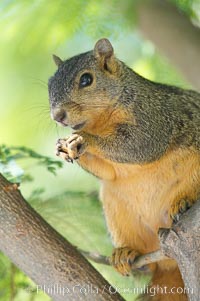
Eastern fox squirrel. The eastern fox squirrel historically occur in the eastern and central portions of North America, but have been introduced in the 1900's to urban areas in the western United States. They are the largest of the North American squirrels, reaching 29 inches in length and up to 3 pounds. They are generalist feeders with a diet that varies according to their habitat, including nuts, seed, bird eggs and chicks, frogs, flowers and agricultural crops.
Species: Eastern fox squirrel, Sciurus niger
Location: Los Angeles, California
Image ID: 18968
Species: Eastern fox squirrel, Sciurus niger
Location: Los Angeles, California
Image ID: 18968
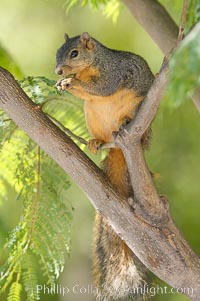
Eastern fox squirrel. The eastern fox squirrel historically occur in the eastern and central portions of North America, but have been introduced in the 1900's to urban areas in the western United States. They are the largest of the North American squirrels, reaching 29 inches in length and up to 3 pounds. They are generalist feeders with a diet that varies according to their habitat, including nuts, seed, bird eggs and chicks, frogs, flowers and agricultural crops.
Species: Eastern fox squirrel, Sciurus niger
Location: Los Angeles, California
Image ID: 18969
Species: Eastern fox squirrel, Sciurus niger
Location: Los Angeles, California
Image ID: 18969
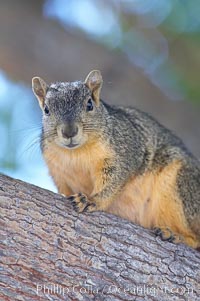
Eastern fox squirrel. The eastern fox squirrel historically occur in the eastern and central portions of North America, but have been introduced in the 1900's to urban areas in the western United States. They are the largest of the North American squirrels, reaching 29 inches in length and up to 3 pounds. They are generalist feeders with a diet that varies according to their habitat, including nuts, seed, bird eggs and chicks, frogs, flowers and agricultural crops.
Species: Eastern fox squirrel, Sciurus niger
Location: Los Angeles, California
Image ID: 18970
Species: Eastern fox squirrel, Sciurus niger
Location: Los Angeles, California
Image ID: 18970
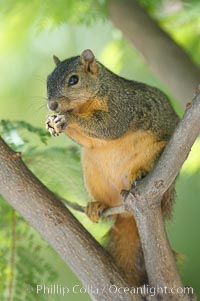
Eastern fox squirrel. The eastern fox squirrel historically occur in the eastern and central portions of North America, but have been introduced in the 1900's to urban areas in the western United States. They are the largest of the North American squirrels, reaching 29 inches in length and up to 3 pounds. They are generalist feeders with a diet that varies according to their habitat, including nuts, seed, bird eggs and chicks, frogs, flowers and agricultural crops.
Species: Eastern fox squirrel, Sciurus niger
Location: Los Angeles, California
Image ID: 18971
Species: Eastern fox squirrel, Sciurus niger
Location: Los Angeles, California
Image ID: 18971
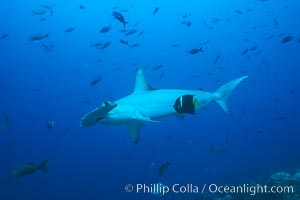
Scalloped hammerhead shark cleaned by King angelfish.
Species: Scalloped hammerhead shark, Holacanthus passer, Sphyrna lewini
Location: Galapagos Islands, Ecuador
Image ID: 01528
Species: Scalloped hammerhead shark, Holacanthus passer, Sphyrna lewini
Location: Galapagos Islands, Ecuador
Image ID: 01528
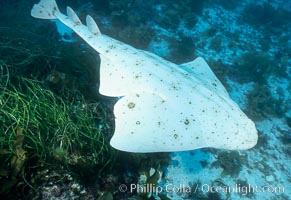
Angel shark, Islas San Benito.
Species: Angel shark, Squatina californica
Location: San Benito Islands (Islas San Benito), Baja California, Mexico
Image ID: 05792
Species: Angel shark, Squatina californica
Location: San Benito Islands (Islas San Benito), Baja California, Mexico
Image ID: 05792

Route 66 (also known as U.S. Route 66, The Main Street of America, The Mother Road and the Will Rogers Highway) was a highway in the U.S. Highway system. One of the original federal routes, US 66 was established in 1926 and originally ran from Chicago through Missouri, Kansas, Oklahoma, Texas, New Mexico, Arizona, and California, before ending at Los Angeles for a total of 2,448 miles. US 66 was officially decommissioned (i.e., removed from the offical U.S. Highway system) in 1985 after it was decided the route was no longer relevant and had been replaced by the Interstate Highway System.
Location: California
Image ID: 20567
Location: California
Image ID: 20567

Route 66 (also known as U.S. Route 66, The Main Street of America, The Mother Road and the Will Rogers Highway) was a highway in the U.S. Highway system. One of the original federal routes, US 66 was established in 1926 and originally ran from Chicago through Missouri, Kansas, Oklahoma, Texas, New Mexico, Arizona, and California, before ending at Los Angeles for a total of 2,448 miles. US 66 was officially decommissioned (i.e., removed from the offical U.S. Highway system) in 1985 after it was decided the route was no longer relevant and had been replaced by the Interstate Highway System.
Location: California
Image ID: 20593
Location: California
Image ID: 20593
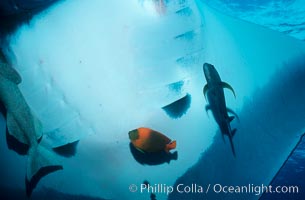
Manta ray cleaned by Clarion angelfish.
Species: Giant manta ray, Holacanthus clarionensis, Manta birostris
Location: San Benedicto Island (Islas Revillagigedos), Baja California, Mexico
Image ID: 02455
Species: Giant manta ray, Holacanthus clarionensis, Manta birostris
Location: San Benedicto Island (Islas Revillagigedos), Baja California, Mexico
Image ID: 02455
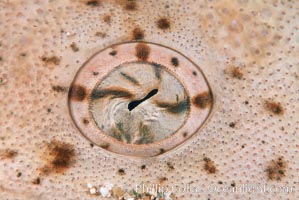
Angel shark eye detail, Islas San Benito.
Species: Angel shark, Squatina californica
Location: San Benito Islands (Islas San Benito), Baja California, Mexico
Image ID: 04601
Species: Angel shark, Squatina californica
Location: San Benito Islands (Islas San Benito), Baja California, Mexico
Image ID: 04601
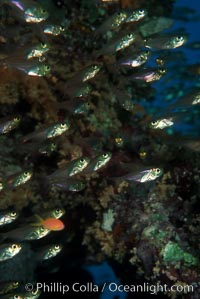
Orange-lined cardinalfish, schooling under reef shelf.
Species: Orangelined cardinalfish, Archamia fucata
Location: Egyptian Red Sea
Image ID: 05229
Species: Orangelined cardinalfish, Archamia fucata
Location: Egyptian Red Sea
Image ID: 05229
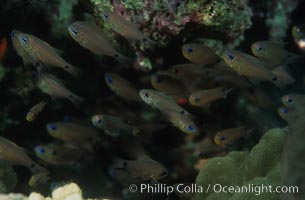
Orange-lined cardinalfish, schooling under reef shelf.
Species: Orangelined cardinalfish, Archamia fucata
Location: Egyptian Red Sea
Image ID: 05230
Species: Orangelined cardinalfish, Archamia fucata
Location: Egyptian Red Sea
Image ID: 05230
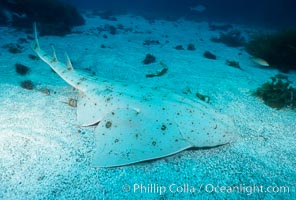
Angel shark, Islas San Benito.
Species: Angel shark, Squatina californica
Location: San Benito Islands (Islas San Benito), Baja California, Mexico
Image ID: 05794
Species: Angel shark, Squatina californica
Location: San Benito Islands (Islas San Benito), Baja California, Mexico
Image ID: 05794
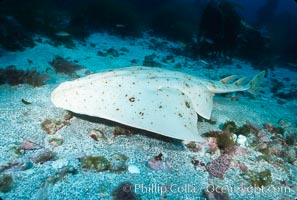
Angel shark, Islas San Benito.
Species: Angel shark, Squatina californica
Location: San Benito Islands (Islas San Benito), Baja California, Mexico
Image ID: 02342
Species: Angel shark, Squatina californica
Location: San Benito Islands (Islas San Benito), Baja California, Mexico
Image ID: 02342
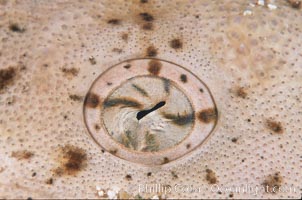
Angel shark eye detail.
Species: Angel shark, Squatina californica
Location: San Benito Islands (Islas San Benito), Baja California, Mexico
Image ID: 04648
Species: Angel shark, Squatina californica
Location: San Benito Islands (Islas San Benito), Baja California, Mexico
Image ID: 04648
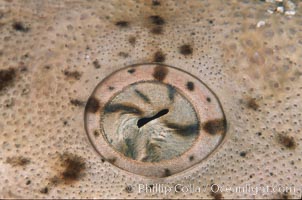
Angel shark eye detail.
Species: Angel shark, Squatina californica
Location: San Benito Islands (Islas San Benito), Baja California, Mexico
Image ID: 04649
Species: Angel shark, Squatina californica
Location: San Benito Islands (Islas San Benito), Baja California, Mexico
Image ID: 04649
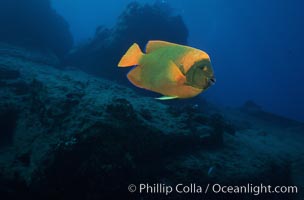
Adult Clarion angelfish, Revilligigedos.
Species: Clarion angelfish, Holacanthus clarionensis
Location: Socorro Island (Islas Revillagigedos), Baja California, Mexico
Image ID: 05770
Species: Clarion angelfish, Holacanthus clarionensis
Location: Socorro Island (Islas Revillagigedos), Baja California, Mexico
Image ID: 05770
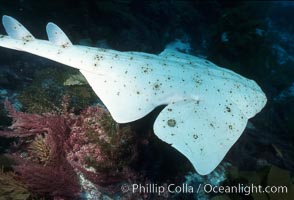
Angel shark.
Species: Angel shark, Squatina californica
Location: San Benito Islands (Islas San Benito), Baja California, Mexico
Image ID: 05791
Species: Angel shark, Squatina californica
Location: San Benito Islands (Islas San Benito), Baja California, Mexico
Image ID: 05791
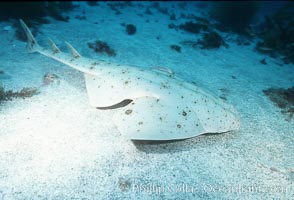
Angel shark.
Species: Angel shark, Squatina californica
Location: San Benito Islands (Islas San Benito), Baja California, Mexico
Image ID: 05793
Species: Angel shark, Squatina californica
Location: San Benito Islands (Islas San Benito), Baja California, Mexico
Image ID: 05793
